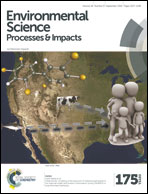The occurrence of endocrine disrupting compounds in off-shore sediments from the southern Baltic Sea
Abstract
This paper presents the study on the occurrence and spatial distribution of polybrominated diphenyl ethers (PBDEs), butyltin compounds (BTCs), bisphenol A (BPA), and alkylphenols (APs) in sediments. The study focused mainly on off-shore surface sediments collected from the southern Baltic Sea. The pollutant concentrations were as follows: <LOQ–0.158 μg kg−1 dw ∑9PBDEs, 0.02–1.06 μg kg−1 dw BDE-209; <LOQ–20.13 μg Sn kg−1 dw ∑BTCs and 2.7–1001 μg kg−1 dw nonylphenols (NPs). The spatial distribution of the analyzed compounds was highly related to the organic matter content in the sediments. Only BDE-209 concentrations were the highest in sandy sediments collected near the point source of pollution. This suggests the fresh anthropogenic input of BDE-209 into the marine environment. The principal component analysis (PCA) confirms these observations—the distribution of ∑BTCs, NPs, and ∑9PBDEs was mainly determined by the physicochemical properties of the sediments, while the distribution of BDE-209 was also related to other factors, such as proximity to the pollution source. According to the environmental standards applied in this work, NPs, and to a lesser extent TBT, might pose a risk to aquatic life in the present study area as they occur in some sediments in concentrations higher than those that might cause adverse effects on biota.


 Please wait while we load your content...
Please wait while we load your content...